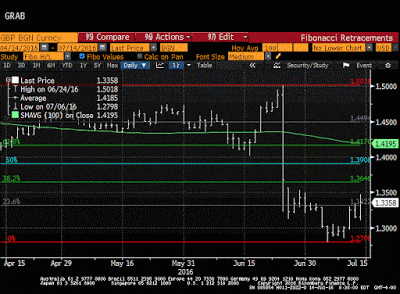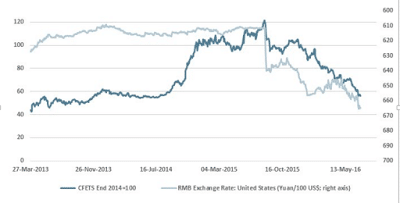(Some) Money Markets Float On this October
The weighted average of the Fed funds rate has edged higher. Following the Fed hike in December 2015, the Fed funds average around 36 bp in January before moving into a 37-38 bp range. However, since the UK referendum it has been trading consistently around 40 bp.
The Fed fund futures contract settles at the average effective Fed funds rate for a given month, not at the policy rate. Ahead of next week’s FOMC meeting where practically no one expects a change in policy, implied yield of the July Fed funds futures contract is 40.25 bp.






